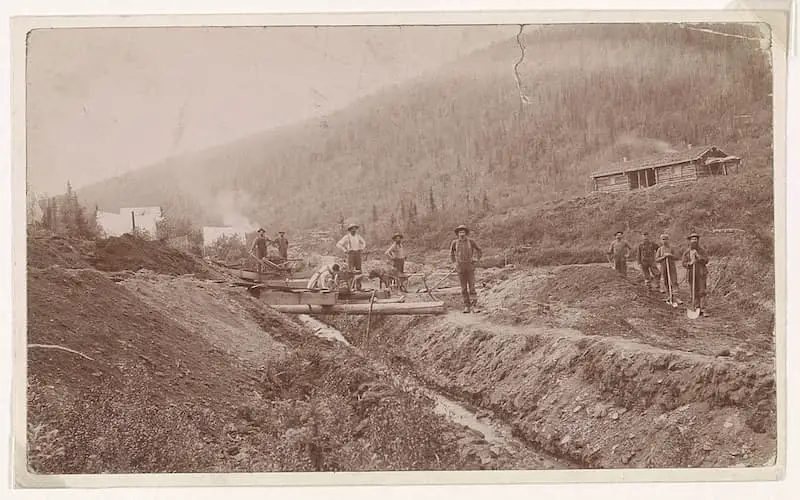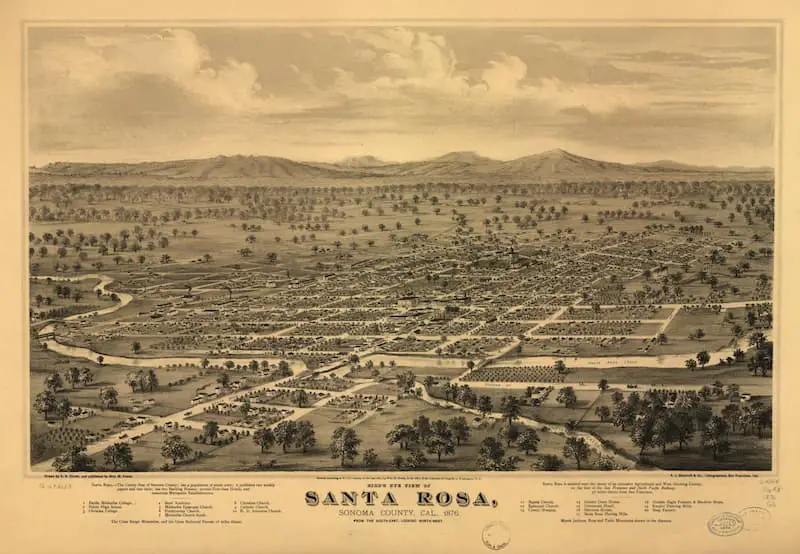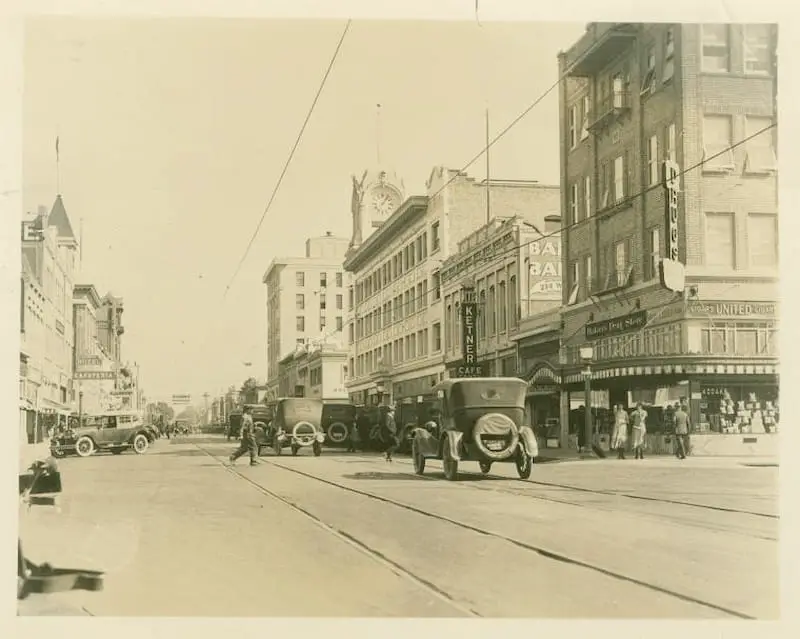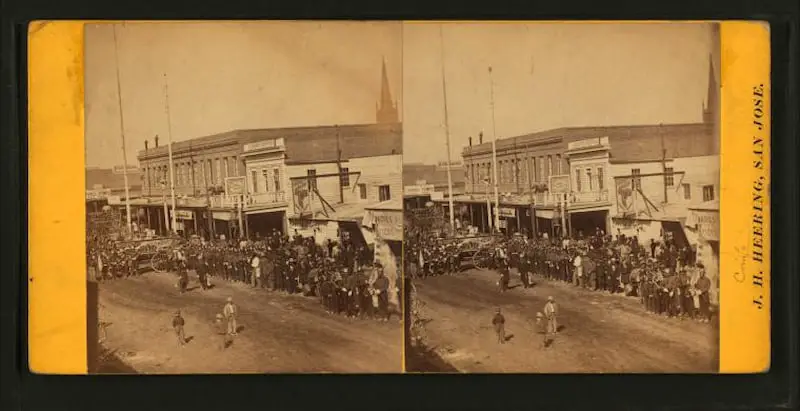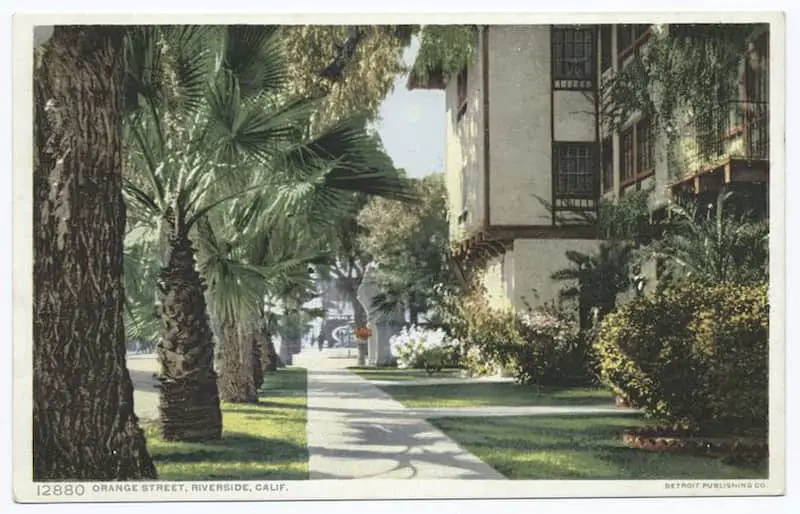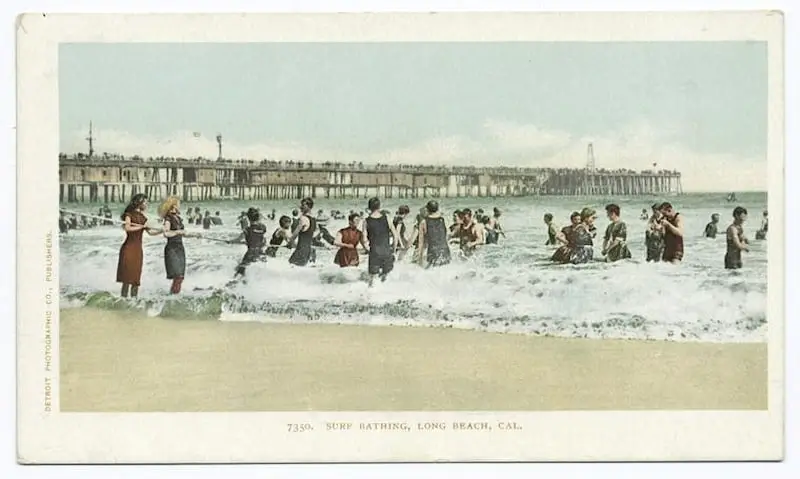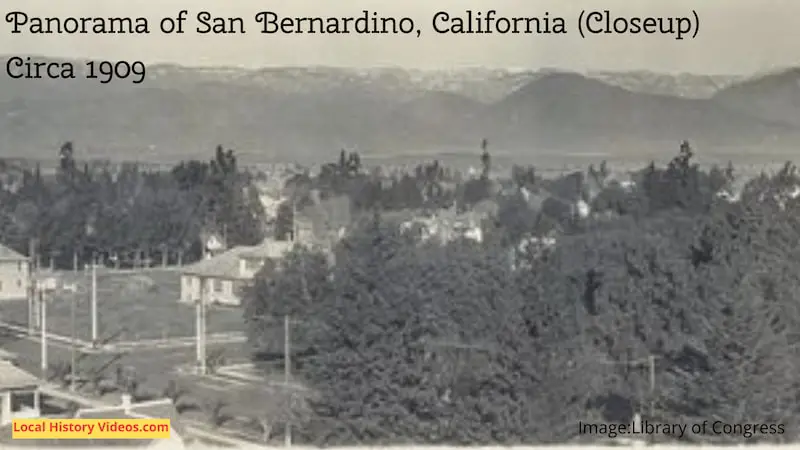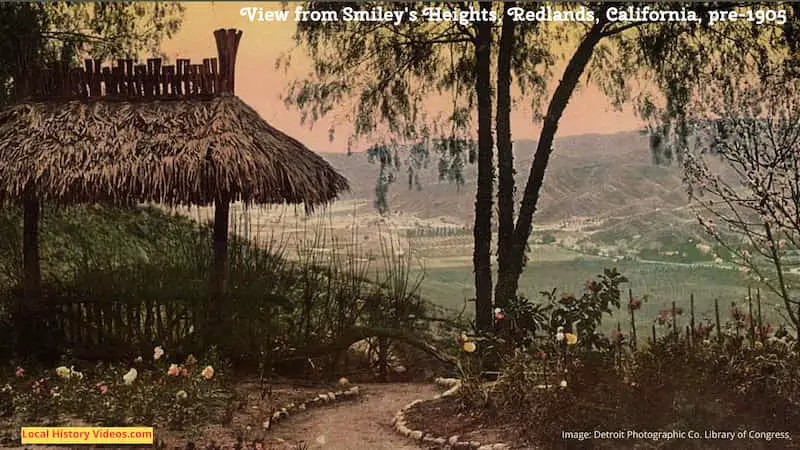Glimpse history through old images of Stockton, California, in the USA.
Old Photos of Stockton, California
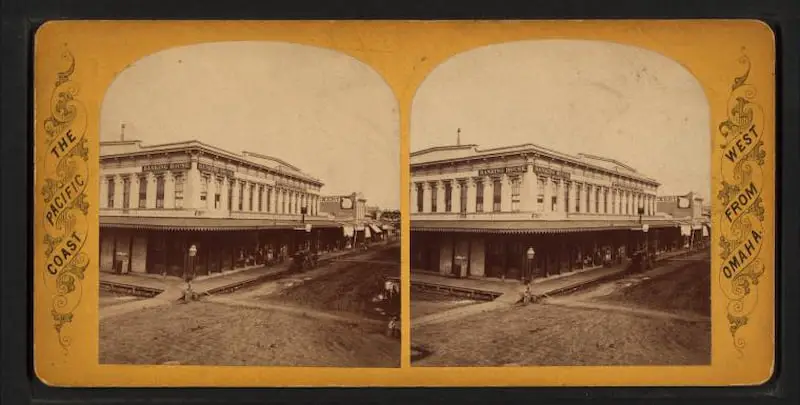
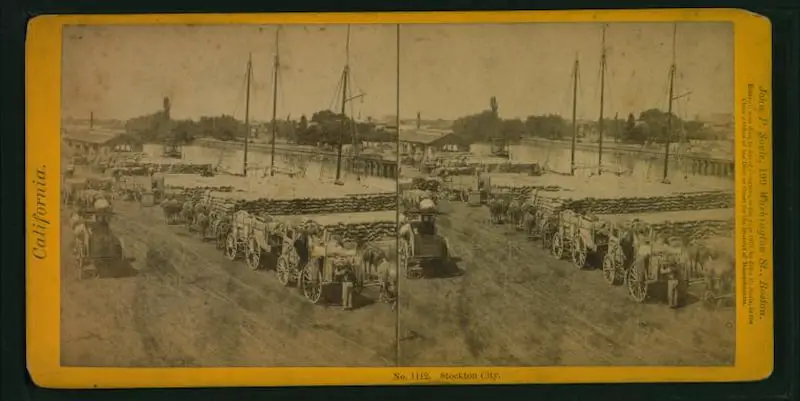
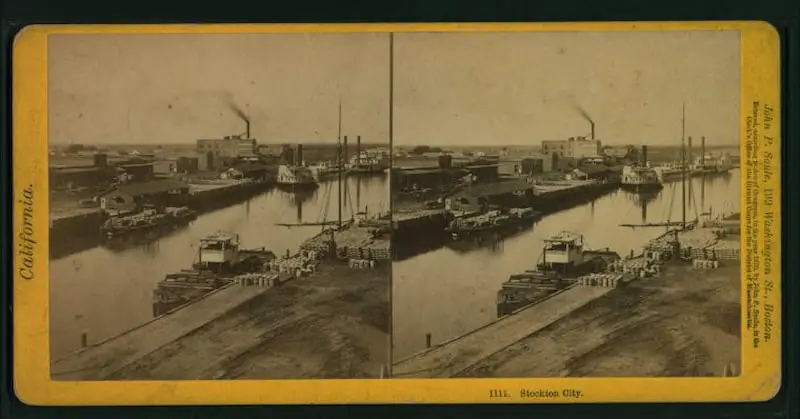
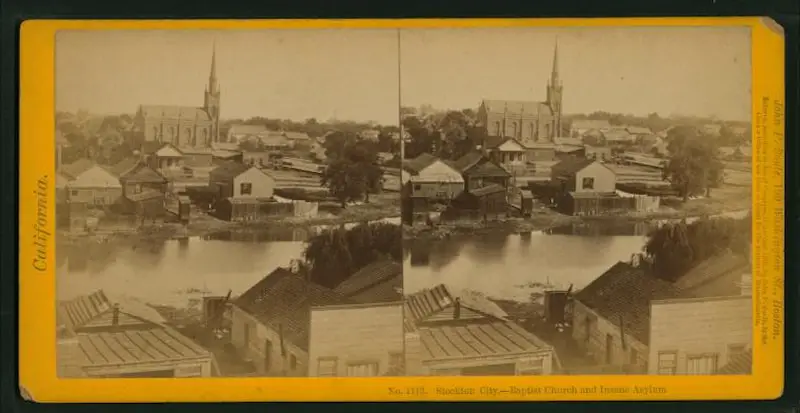
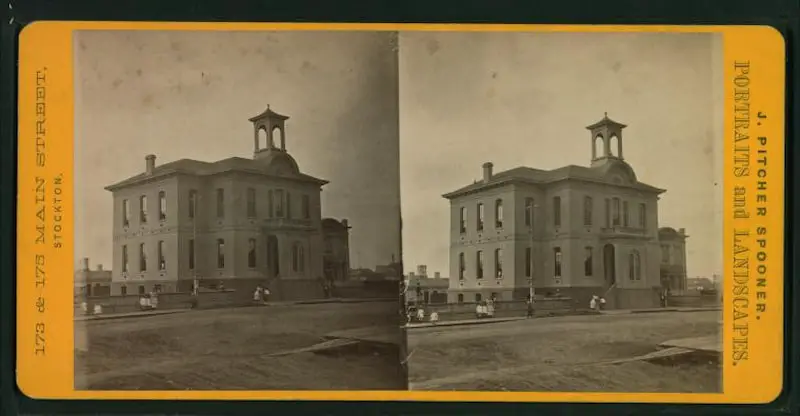
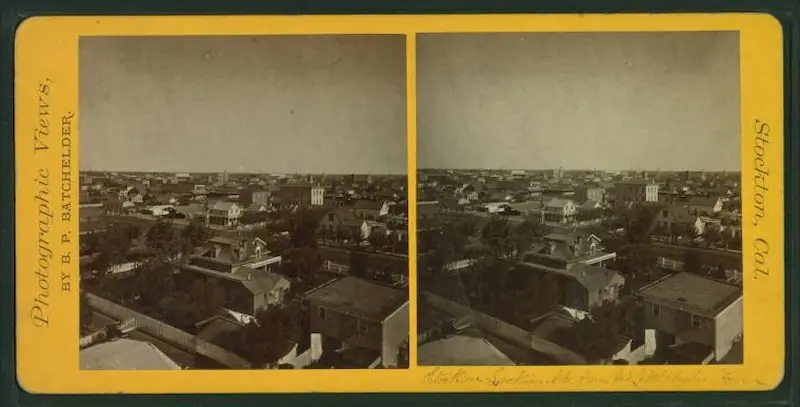
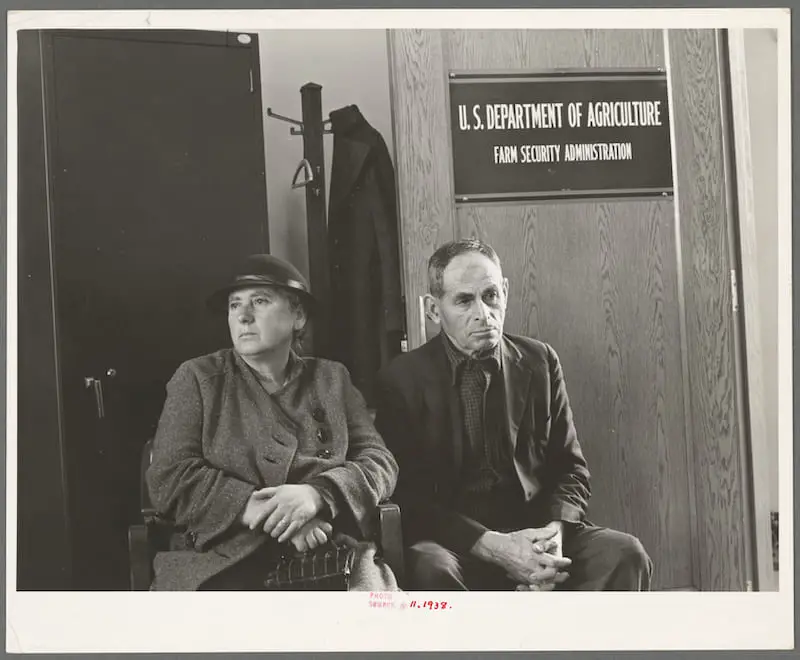
Downtown Stockton in 1988
Towards the end of the 1980s, a home movie was recorded as a car drove through Stockton’s downtown streets. It’s dusk on a dull day, so the street sare quiet, but there’s lots to see.
Drive through downtown Stockton., Circa 1988. – Torbin Bequette on YouTube
Stockton’s Riverside in 2008
A promotional short film about the Delta River Cruise service gives different views of the riverside from the boat.
Delta River Cruise Downtown Stockton, CA – Visit Stockton on YouTube
A Bit of Stockton History
Extract from:
“The City of Stockton: Its Position, Climate, Commerce, Resources, Etc., Together with a Brief Sketch of the Great San Joaquin Basin of California, of which Stockton is the Natural Business Center”, by Stockton Board of Trade (Stockton, Calif.)
Published in 1874
Pages 3 – 5
Stockton, at present the third city in population in California, is located on a level prairie at the head of Stockton Slough, a wide and deep arm of the San Joaquin, which extends from the river three miles into the plain. It occupies a very favorable commercial position, the San Joaquin river being navigable to this point from San Francisco at all seasons of the year, for vessels of from one hundred and fifty to two hundred and fifty tons burden, and Stockton Slough, with its two branches, Mormon and Lindsay channels, both of which are navigable to central portions of the city – affords wharf room and harbor facilities such as are seldom possessed by interior towns. In the Winter and Spring months, steamers also ply upon the upper San Joaquin for a distance of nearly two hundred miles above Stockton.
The country adjacent to the city is level, extending to the foothills of the Sierra Nevada Range on the east, the Coast Range on the west, while on the north and south stretch the vast inland plains of California, known as the Sacramento and San Joaquin valleys, which extend nearly the whole length of the State. On the east and north of Stockton, the Sierra range of mountains is clearly visible in the distance, and as the higher peaks of this range are covered with snow at all seasons of the year, the residents of this valley, in which snow seldom falls, are afforded a view seldom obtained in any other locality of the same latitude on the continent. On the west and south, the Coast Range can be seen, its most prominent peak, Mount Diablo, adding materially to the beauty of the scenery.
The city was laid out into streets in 1849, by its founder, Captain C. M. Weber, who had been a settler in this county for several years previous.
He obtained a grant from the Mexican Governor, Micheltorena, of a large tract of land in this vicinity in 1844, and has been a resident of this county ever since that time. The city of Stockton and the land adjacent is upon the grant made to him, and he has done much to make Stockton the prosperous and important city it has now become.
The corporate limits of the city at present extend over four square miles, and its streets run at right angles, dividing the city into blocks three hundred feet square. The principle streets are graded and graveled, and compare very favorably with those of other interior cities in California.
A street railroad is now being constructed which will connect the water front with the depot of the Central Pacific Railroad, and also extend into the suburbs, and afford improved facilities for communication between the business portions of the city and those parts principally occupied with the dwellings of its residents.
THE GROWTH OF THE CITY.
Stockton was one of the earliest settlements in the interior of California, but it has never passed through any period of rapid expansion such as were experienced by many other California towns that are now but the wrecks of their former greatness.
Its growth has been steady and permanent, and it is now making as rapid advancement as at any previous period in its history, for the very good reason that its growth is keeping pace with the permanent development of the resources of the country of which the city is the commercial centre.
For the first ten years of its existence, Stockton was principally supported by the trade of the mining regions of the counties of Amador; Calaveras, Tuolumne, Mariposa, Fresno and Tulare, all the supplies for these districts being shipped from this city.
As the mining interests of these counties declined by the exhaustion of the placer diggings, more attention was paid to the development of the agricultural resources of the country, and it was soon demonstrated that the San Joaquin Valley was one of the most valuable agricultural regions on the continent, and that its latent wealth which had been overlooked during the period of the gold excitement, would, when developed, insure permanent prosperity to a vast area of country which had been pronounced nearly worthless by the gold seekers, who for several years had been traveling through it to reach the mines, which they believed to be the only source of wealth California possessed.
The gradual development of the agricultural resources of the San Joaquin Valley has changed Stockton from a simple entrepot and distributing point for miners’ supplies, to an important market and shipping point for the immense products of the valley, and the importance of this new trade to the city is shown by its constant growth, and the general prosperity of its inhabitants.
The estimated population of the city at the present time is 13,000.
More about California
- California Gold Rush Facts
- Old Images of Stockton, California
- Old Images of Santa Rosa, Califonia
- Old Images of Santa Ana, California
- Old Images of San José, California
- Old Images of Riverside, California
- Old Images of Oakland, California
- Old Images of Long Beach, California
- Old Images of San Bernardino, California
- Old Images of Redlands, California

